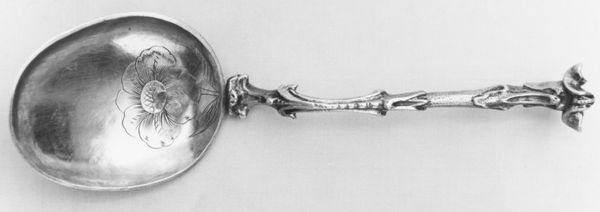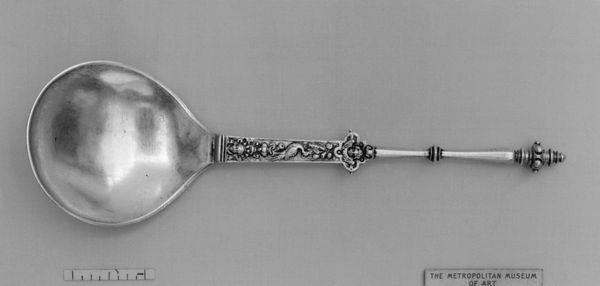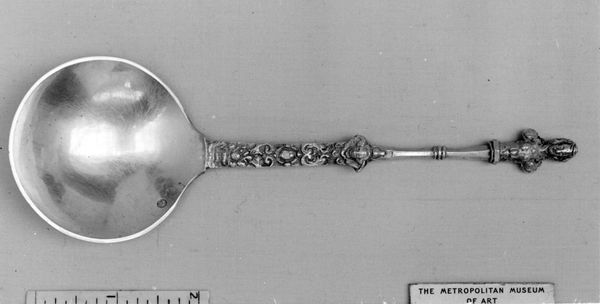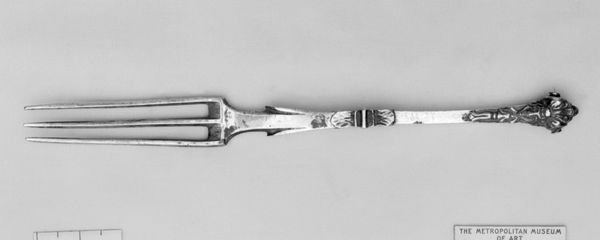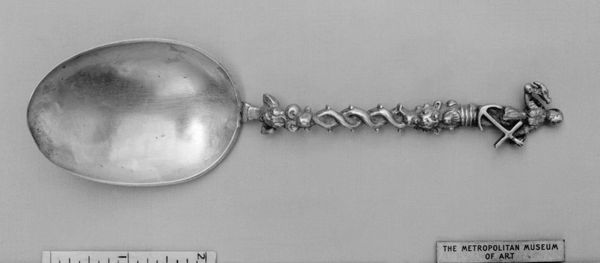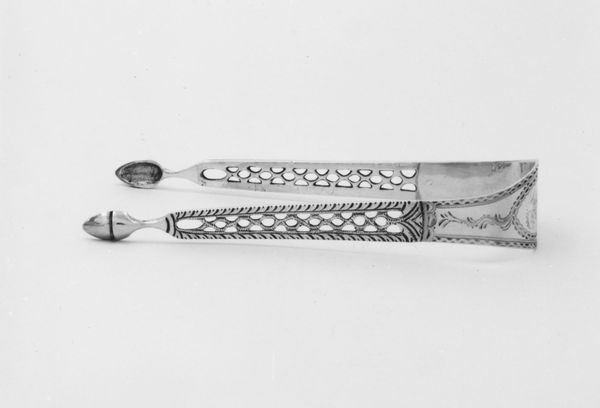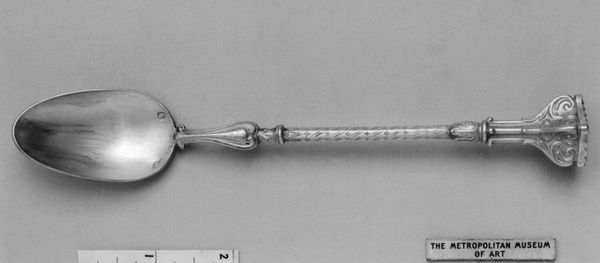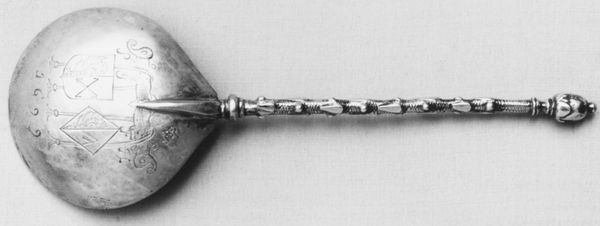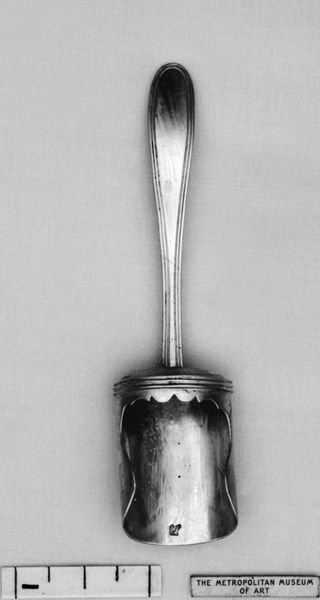
silver, sculpture
#
silver
#
sculpture
#
decorative-art
Dimensions: Length: 6 in. (15.2 cm)
Copyright: Public Domain
Curator: At first glance, this looks incredibly ornate, almost overwhelming. There's a level of detail here that invites closer inspection. Editor: Indeed. Before us, we have a silver sugar spoon, crafted between 1854 and 1855 by H. & T. of Birmingham. Currently, it resides at the Metropolitan Museum of Art. Its classification as decorative art highlights its dual nature—both functional and aesthetic. The intricate design immediately draws the eye. Curator: Absolutely. It's impossible to ignore the sheer quantity of decoration. The bowl is filled with a dense cluster of grapes and foliage, echoing across the handle too, creating a strong sense of abundance. Editor: Let's consider the symbolism of the grapes. Given the era and the material—silver, associated with wealth—grapes could signify prosperity, luxury, perhaps even a reference to classical bacchanalian feasts. Beyond just grapes though, this era saw rise in consumption for the upper middle classes in particular, whose homes displayed collections like this as signifiers of status. The elaborate decoration speaks to the skilled labor involved in its production. Each flourish would have been carefully considered and executed. Curator: Yes, thinking of the labor helps situate it, but visually, I’m interested in how the spoon is structured. The curvilinear forms evoke a sense of movement, almost as if the spoon is a vine itself, constantly growing and branching. It’s not just about luxury, but about conveying organic vitality within the confines of an object. Editor: The high level of craftsmanship challenges that division between craft and high art. We see design and utility united in a sculptural form. Silver, as a material, has historically embodied this union. While designed to be functional in serving sugar, its existence is inseparable from the systems of labor and consumption of this time. Curator: This piece serves as a useful object, certainly. The materiality really exemplifies mid-19th century aesthetics when people were trying to create objects which displayed complex beauty through dense textures. Editor: Exactly. It encourages a dialogue between the past and present. Its lasting power lies in how it communicates social history through an engagement of material.
Comments
No comments
Be the first to comment and join the conversation on the ultimate creative platform.


